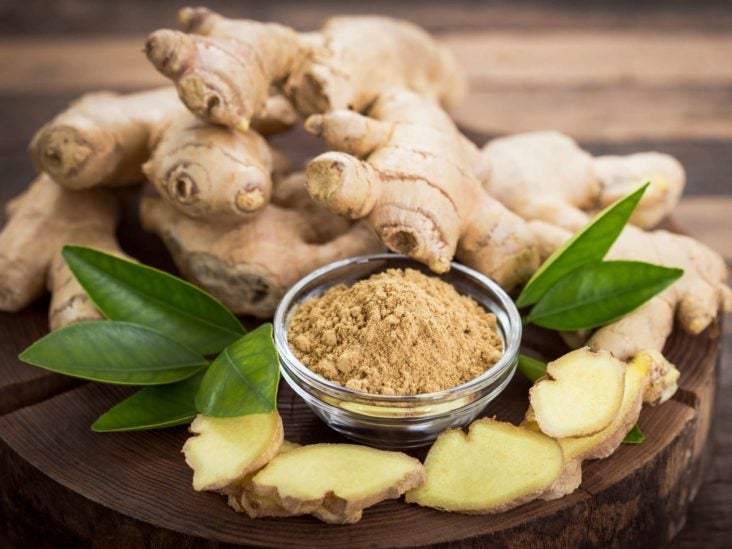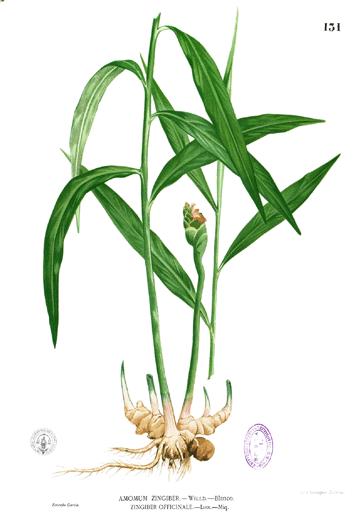Humans are known to consume the roots of many plants. Most of them have medicinal powers, dietary- and health benefits. Some of the most popular roots( root vegetables) we consume ranging from yams to turnips and from sweet potato to beats. In this blog we will discuss one of the “super” roots, called ginger. We will look at 7 facts about ginger.
Ginger is a root.
Ginger (Zingiber officinale) is a flowering plant whose rhizome, ginger root or ginger, is widely used as a spice and a folk medicine. It is a herbaceous perennial which grows annual pseudostems (false stems made of the rolled bases of leaves) about one meter tall bearing narrow leaf blades. The inflorescences bear pale yellow with purple flowers and arise directly from the rhizome on separate shoots.

Long lost cousin of Turmeric.
Turmeric (Curcuma longa) and Ginger (Zingiber officinale) are both part of the ginger family(Zingiberaceae). The appearance of both roots are very similar. The differences these roots have are: scent, colour and flavour. Turmeric has a darker colour, stronger scent and a stronger flavour. Some other members of the ginger family are: Alpinia Galanga ( Suriname: Laos), Spiral Ginger ( Suriname: Sangrafu) and
Please note that not all of the aforementioned plants are edible.

History of Ginger
The story of Ginger dates back 5000 years. Ancient Chinese philosopher Confucius celebrated its healing powers and to the Romans it was a strong symbol of wealth and fertility. Ginger root was discovered and cultivated in South Asia before being exported to East Africa and the Caribbean.

Uses of ginger
Most common use of ginger is its powder, it is commonly used as a spice for food flavouring. Ginger is used to make ginger beer, a popular home brewed drink, it is popular among the Caribbean and African community. Other products made with ginger or containing a significant portion of ginger are: gingerbread and ginger snaps.

Ginger and menstrual pain
Ginger powder may significantly reduce menstrual pain. Menstrual pain (dysmenorrhea) refers to pain felt during a woman's menstrual cycle. One of the traditional uses of ginger is for pain relief, including menstrual pain. In one study, 150 women were instructed to take 1 gram of ginger powder per day, for the first 3 days of the menstrual period. In this study they compared ginger to ibuprofen( commonly used as a painkiller). At the end of this study results showed that ginger powder was as effective as ibuprofen.

Ginger and your muscles
Ginger may reduce muscle pain and soreness. Ginger has been shown to be effective against exercise-induced muscle pain. In one study, consuming 2 grams of ginger per day, for 11 days, significantly reduced muscle pain in people performing elbow exercises. Ginger does not have an immediate impact, but may be effective at reducing the day-to-day progression of muscle pain. These effects are believed to be mediated by the anti-inflammatory properties.

Ginger Tea and stress
We all have days when we are stressed and think nothing can help. Only if you knew that ginger could help you! Ginger tea has calming properties that may help lower your stress and tension. This is thought to be due to a combination of the strong aroma and healing properties.

Some plants are looked over, because most people do not know the health benefits these plants possess. Ginger is also one of these plants. When doing research you stumble upon a lot of information, past research and research going on right now. With the glossary of information, the author tried to compile everything into these seven facts.
See you soon and remember, there is no such thing as knowing too much.
Missed my previous blog?
Read it here: A Sweet Mystery
Comments
Post a Comment